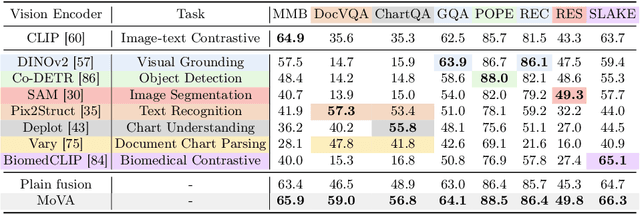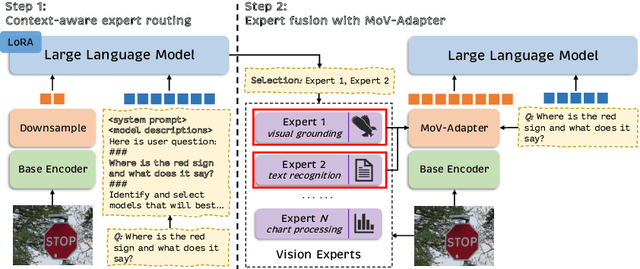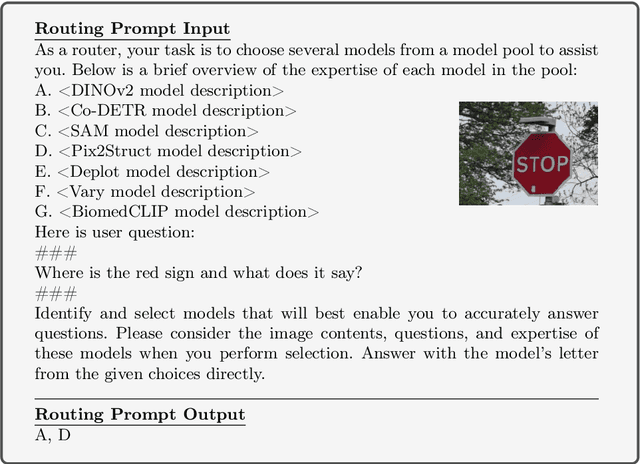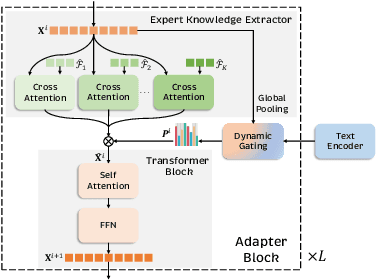Guanglu Song
High-Fidelity Diffusion Face Swapping with ID-Constrained Facial Conditioning
Mar 28, 2025Abstract:Face swapping aims to seamlessly transfer a source facial identity onto a target while preserving target attributes such as pose and expression. Diffusion models, known for their superior generative capabilities, have recently shown promise in advancing face-swapping quality. This paper addresses two key challenges in diffusion-based face swapping: the prioritized preservation of identity over target attributes and the inherent conflict between identity and attribute conditioning. To tackle these issues, we introduce an identity-constrained attribute-tuning framework for face swapping that first ensures identity preservation and then fine-tunes for attribute alignment, achieved through a decoupled condition injection. We further enhance fidelity by incorporating identity and adversarial losses in a post-training refinement stage. Our proposed identity-constrained diffusion-based face-swapping model outperforms existing methods in both qualitative and quantitative evaluations, demonstrating superior identity similarity and attribute consistency, achieving a new state-of-the-art performance in high-fidelity face swapping.
VividFace: A Diffusion-Based Hybrid Framework for High-Fidelity Video Face Swapping
Dec 15, 2024



Abstract:Video face swapping is becoming increasingly popular across various applications, yet existing methods primarily focus on static images and struggle with video face swapping because of temporal consistency and complex scenarios. In this paper, we present the first diffusion-based framework specifically designed for video face swapping. Our approach introduces a novel image-video hybrid training framework that leverages both abundant static image data and temporal video sequences, addressing the inherent limitations of video-only training. The framework incorporates a specially designed diffusion model coupled with a VidFaceVAE that effectively processes both types of data to better maintain temporal coherence of the generated videos. To further disentangle identity and pose features, we construct the Attribute-Identity Disentanglement Triplet (AIDT) Dataset, where each triplet has three face images, with two images sharing the same pose and two sharing the same identity. Enhanced with a comprehensive occlusion augmentation, this dataset also improves robustness against occlusions. Additionally, we integrate 3D reconstruction techniques as input conditioning to our network for handling large pose variations. Extensive experiments demonstrate that our framework achieves superior performance in identity preservation, temporal consistency, and visual quality compared to existing methods, while requiring fewer inference steps. Our approach effectively mitigates key challenges in video face swapping, including temporal flickering, identity preservation, and robustness to occlusions and pose variations.
EasyRef: Omni-Generalized Group Image Reference for Diffusion Models via Multimodal LLM
Dec 12, 2024



Abstract:Significant achievements in personalization of diffusion models have been witnessed. Conventional tuning-free methods mostly encode multiple reference images by averaging their image embeddings as the injection condition, but such an image-independent operation cannot perform interaction among images to capture consistent visual elements within multiple references. Although the tuning-based Low-Rank Adaptation (LoRA) can effectively extract consistent elements within multiple images through the training process, it necessitates specific finetuning for each distinct image group. This paper introduces EasyRef, a novel plug-and-play adaptation method that enables diffusion models to be conditioned on multiple reference images and the text prompt. To effectively exploit consistent visual elements within multiple images, we leverage the multi-image comprehension and instruction-following capabilities of the multimodal large language model (MLLM), prompting it to capture consistent visual elements based on the instruction. Besides, injecting the MLLM's representations into the diffusion process through adapters can easily generalize to unseen domains, mining the consistent visual elements within unseen data. To mitigate computational costs and enhance fine-grained detail preservation, we introduce an efficient reference aggregation strategy and a progressive training scheme. Finally, we introduce MRBench, a new multi-reference image generation benchmark. Experimental results demonstrate EasyRef surpasses both tuning-free methods like IP-Adapter and tuning-based methods like LoRA, achieving superior aesthetic quality and robust zero-shot generalization across diverse domains.
See Further When Clear: Curriculum Consistency Model
Dec 09, 2024



Abstract:Significant advances have been made in the sampling efficiency of diffusion models and flow matching models, driven by Consistency Distillation (CD), which trains a student model to mimic the output of a teacher model at a later timestep. However, we found that the learning complexity of the student model varies significantly across different timesteps, leading to suboptimal performance in CD.To address this issue, we propose the Curriculum Consistency Model (CCM), which stabilizes and balances the learning complexity across timesteps. Specifically, we regard the distillation process at each timestep as a curriculum and introduce a metric based on Peak Signal-to-Noise Ratio (PSNR) to quantify the learning complexity of this curriculum, then ensure that the curriculum maintains consistent learning complexity across different timesteps by having the teacher model iterate more steps when the noise intensity is low. Our method achieves competitive single-step sampling Fr\'echet Inception Distance (FID) scores of 1.64 on CIFAR-10 and 2.18 on ImageNet 64x64.Moreover, we have extended our method to large-scale text-to-image models and confirmed that it generalizes well to both diffusion models (Stable Diffusion XL) and flow matching models (Stable Diffusion 3). The generated samples demonstrate improved image-text alignment and semantic structure, since CCM enlarges the distillation step at large timesteps and reduces the accumulated error.
Robo-MUTUAL: Robotic Multimodal Task Specification via Unimodal Learning
Oct 02, 2024



Abstract:Multimodal task specification is essential for enhanced robotic performance, where \textit{Cross-modality Alignment} enables the robot to holistically understand complex task instructions. Directly annotating multimodal instructions for model training proves impractical, due to the sparsity of paired multimodal data. In this study, we demonstrate that by leveraging unimodal instructions abundant in real data, we can effectively teach robots to learn multimodal task specifications. First, we endow the robot with strong \textit{Cross-modality Alignment} capabilities, by pretraining a robotic multimodal encoder using extensive out-of-domain data. Then, we employ two Collapse and Corrupt operations to further bridge the remaining modality gap in the learned multimodal representation. This approach projects different modalities of identical task goal as interchangeable representations, thus enabling accurate robotic operations within a well-aligned multimodal latent space. Evaluation across more than 130 tasks and 4000 evaluations on both simulated LIBERO benchmark and real robot platforms showcases the superior capabilities of our proposed framework, demonstrating significant advantage in overcoming data constraints in robotic learning. Website: zh1hao.wang/Robo_MUTUAL
Exploring the Role of Large Language Models in Prompt Encoding for Diffusion Models
Jun 17, 2024Abstract:Large language models (LLMs) based on decoder-only transformers have demonstrated superior text understanding capabilities compared to CLIP and T5-series models. However, the paradigm for utilizing current advanced LLMs in text-to-image diffusion models remains to be explored. We observed an unusual phenomenon: directly using a large language model as the prompt encoder significantly degrades the prompt-following ability in image generation. We identified two main obstacles behind this issue. One is the misalignment between the next token prediction training in LLM and the requirement for discriminative prompt features in diffusion models. The other is the intrinsic positional bias introduced by the decoder-only architecture. To deal with this issue, we propose a novel framework to fully harness the capabilities of LLMs. Through the carefully designed usage guidance, we effectively enhance the text representation capability for prompt encoding and eliminate its inherent positional bias. This allows us to integrate state-of-the-art LLMs into the text-to-image generation model flexibly. Furthermore, we also provide an effective manner to fuse multiple LLMs into our framework. Considering the excellent performance and scaling capabilities demonstrated by the transformer architecture, we further design an LLM-Infused Diffusion Transformer (LI-DiT) based on the framework. We conduct extensive experiments to validate LI-DiT across model size and data size. Benefiting from the inherent ability of the LLMs and our innovative designs, the prompt understanding performance of LI-DiT easily surpasses state-of-the-art open-source models as well as mainstream closed-source commercial models including Stable Diffusion 3, DALL-E 3, and Midjourney V6. The powerful LI-DiT-10B will be available after further optimization and security checks.
Phased Consistency Model
May 28, 2024Abstract:The consistency model (CM) has recently made significant progress in accelerating the generation of diffusion models. However, its application to high-resolution, text-conditioned image generation in the latent space (a.k.a., LCM) remains unsatisfactory. In this paper, we identify three key flaws in the current design of LCM. We investigate the reasons behind these limitations and propose the Phased Consistency Model (PCM), which generalizes the design space and addresses all identified limitations. Our evaluations demonstrate that PCM significantly outperforms LCM across 1--16 step generation settings. While PCM is specifically designed for multi-step refinement, it achieves even superior or comparable 1-step generation results to previously state-of-the-art specifically designed 1-step methods. Furthermore, we show that PCM's methodology is versatile and applicable to video generation, enabling us to train the state-of-the-art few-step text-to-video generator. More details are available at https://g-u-n.github.io/projects/pcm/.
Deep Reward Supervisions for Tuning Text-to-Image Diffusion Models
May 01, 2024Abstract:Optimizing a text-to-image diffusion model with a given reward function is an important but underexplored research area. In this study, we propose Deep Reward Tuning (DRTune), an algorithm that directly supervises the final output image of a text-to-image diffusion model and back-propagates through the iterative sampling process to the input noise. We find that training earlier steps in the sampling process is crucial for low-level rewards, and deep supervision can be achieved efficiently and effectively by stopping the gradient of the denoising network input. DRTune is extensively evaluated on various reward models. It consistently outperforms other algorithms, particularly for low-level control signals, where all shallow supervision methods fail. Additionally, we fine-tune Stable Diffusion XL 1.0 (SDXL 1.0) model via DRTune to optimize Human Preference Score v2.1, resulting in the Favorable Diffusion XL 1.0 (FDXL 1.0) model. FDXL 1.0 significantly enhances image quality compared to SDXL 1.0 and reaches comparable quality compared with Midjourney v5.2.
MoVA: Adapting Mixture of Vision Experts to Multimodal Context
Apr 19, 2024



Abstract:As the key component in multimodal large language models (MLLMs), the ability of the visual encoder greatly affects MLLM's understanding on diverse image content. Although some large-scale pretrained vision encoders such as vision encoders in CLIP and DINOv2 have brought promising performance, we found that there is still no single vision encoder that can dominate various image content understanding, e.g., the CLIP vision encoder leads to outstanding results on general image understanding but poor performance on document or chart content. To alleviate the bias of CLIP vision encoder, we first delve into the inherent behavior of different pre-trained vision encoders and then propose the MoVA, a powerful and novel MLLM, adaptively routing and fusing task-specific vision experts with a coarse-to-fine mechanism. In the coarse-grained stage, we design a context-aware expert routing strategy to dynamically select the most suitable vision experts according to the user instruction, input image, and expertise of vision experts. This benefits from the powerful model function understanding ability of the large language model (LLM) equipped with expert-routing low-rank adaptation (LoRA). In the fine-grained stage, we elaborately conduct the mixture-of-vision-expert adapter (MoV-Adapter) to extract and fuse task-specific knowledge from various experts. This coarse-to-fine paradigm effectively leverages representations from experts based on multimodal context and model expertise, further enhancing the generalization ability. We conduct extensive experiments to evaluate the effectiveness of the proposed approach. Without any bells and whistles, MoVA can achieve significant performance gains over current state-of-the-art methods in a wide range of challenging multimodal benchmarks. Codes and models will be available at https://github.com/TempleX98/MoVA.
Rethinking the Spatial Inconsistency in Classifier-Free Diffusion Guidance
Apr 08, 2024Abstract:Classifier-Free Guidance (CFG) has been widely used in text-to-image diffusion models, where the CFG scale is introduced to control the strength of text guidance on the whole image space. However, we argue that a global CFG scale results in spatial inconsistency on varying semantic strengths and suboptimal image quality. To address this problem, we present a novel approach, Semantic-aware Classifier-Free Guidance (S-CFG), to customize the guidance degrees for different semantic units in text-to-image diffusion models. Specifically, we first design a training-free semantic segmentation method to partition the latent image into relatively independent semantic regions at each denoising step. In particular, the cross-attention map in the denoising U-net backbone is renormalized for assigning each patch to the corresponding token, while the self-attention map is used to complete the semantic regions. Then, to balance the amplification of diverse semantic units, we adaptively adjust the CFG scales across different semantic regions to rescale the text guidance degrees into a uniform level. Finally, extensive experiments demonstrate the superiority of S-CFG over the original CFG strategy on various text-to-image diffusion models, without requiring any extra training cost. our codes are available at https://github.com/SmilesDZgk/S-CFG.
 Add to Chrome
Add to Chrome Add to Firefox
Add to Firefox Add to Edge
Add to Edge